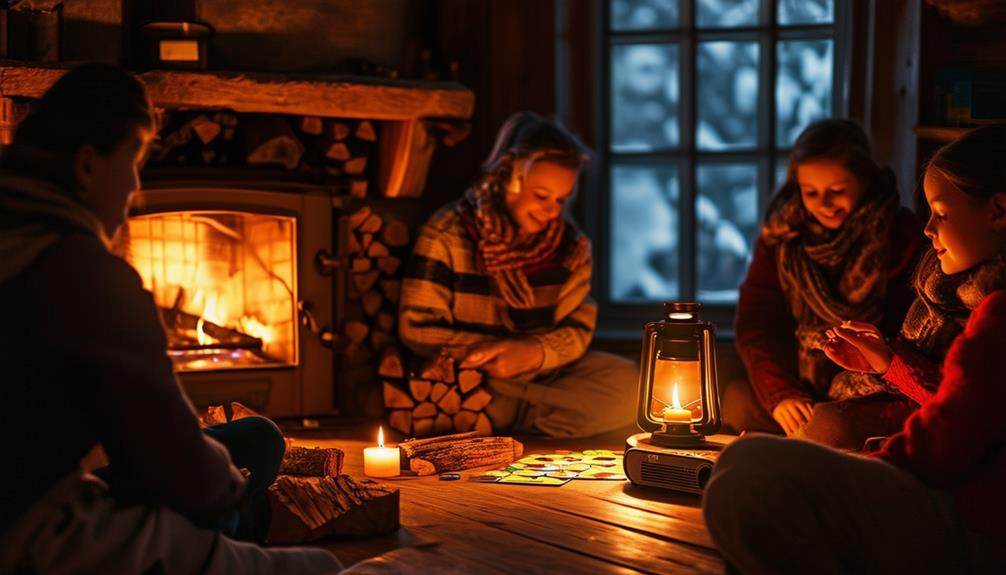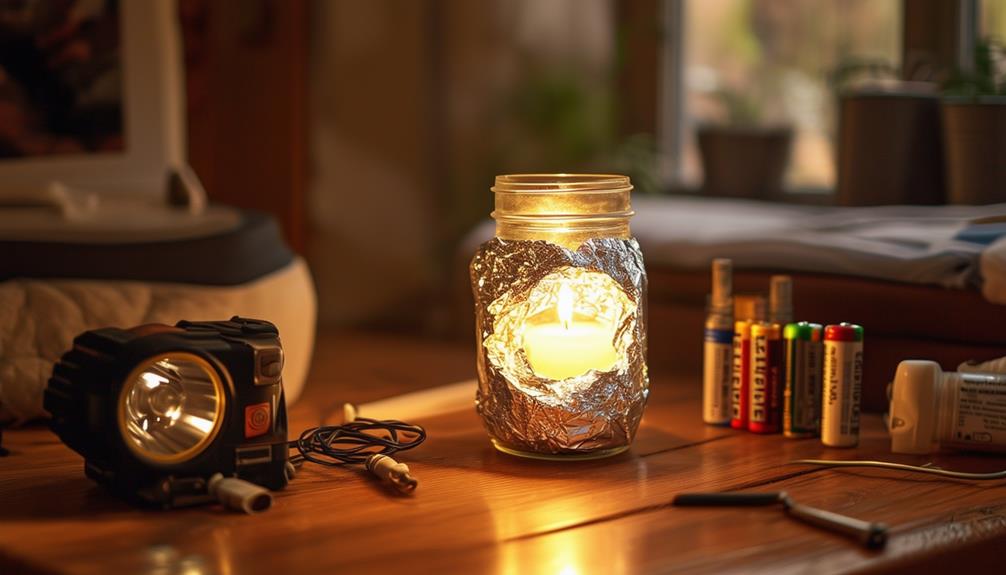10 Ways to Heat Your House in an Emergency: Essential Tips for Staying Warm

Winter power outages can leave homes without heat, creating dangerous situations. Having emergency heating options is crucial for staying warm and safe. Alternative heat sources like wood stoves, kerosene heaters, and propane heaters can provide warmth when electricity fails. It's important to use these carefully to avoid carbon monoxide buildup.
Preparing for winter emergencies involves more than just heating. Creating a warm room by sealing off a small area helps conserve heat. Blocking drafts, using extra blankets, and dressing in layers also reduce heat loss. With some planning, households can stay comfortable even during extended power outages in cold weather.
Emergency Home Heating Methods
Light a Kerosene Heater
Kerosene heaters can be a good option for temporary home heating during power outages. Choose a small, indoor-safe model designed for ventless use. Place it near a cracked window to allow fumes to escape. Always follow safety guidelines when using fuel-burning appliances indoors.
Layer Up and Use Hand Warmers
Insulating your body is often more effective than trying to heat a whole room. Put on multiple layers of warm clothing, especially items made with down insulation. Tuck chemical hand warmers into pockets or waistbands for extra warmth close to your skin.
Set Up a Warm Room
Pick one room to serve as your main living and sleeping area during an emergency. Seal off doorways and vents to other parts of the house using blankets or plastic sheeting. Focus your heating efforts on this space. Bring mattresses and bedding in to create a cozy spot for the whole family.
Install a Temporary Wood Stove
For extended power outages, a portable wood stove can provide reliable heat and a cooking surface. Set it up near a window and vent the smoke outside through a makeshift chimney pipe. This takes some work to set up safely but offers a long-term heating solution.
Make a DIY Candle Heater
While not very powerful, a homemade candle heater can provide a small amount of warmth in an emergency. Use clay flower pots to capture and radiate heat from burning candles. Keep it away from flammable items and out of reach of kids and pets.
Try a Catalytic Gas Heater
Catalytic heaters use propane to warm a heating element that then radiates heat into a room. Modern versions work well in enclosed spaces like RVs. For safety, place near a cracked window and maintain the unit properly.
Burn Cans of Biofuel
Small cans of eco-friendly biofuel gel can offer a clean-burning heat source for minor warming needs. The fumes are minimal, making them suitable for indoor emergency use.
Warm Up with Soapstone
Soapstone absorbs and slowly releases heat, making it useful for warming small areas. Place soapstone blocks near a heat source to charge them up. They can then radiate warmth for hours as bed warmers or personal heaters.
Harness Wind Power
Installing a small wind turbine system can provide backup electricity during outages. Unlike solar, wind power is often plentiful in winter. This eco-friendly option can generate enough power to run space heaters and other essential items.
Common Questions About Emergency Home Heating
Safe Indoor Heating Options Without Power
Indoor heating without electricity can be done safely using a few methods. Candles in clay pots can create a small heat source. Propane or kerosene heaters work well but need proper ventilation. Battery-powered or hand-crank heaters are good choices too. Always follow safety guidelines when using any emergency heat source.
Keeping Your Home Warm During Power Outages
To keep a home warm without power, focus on one room. Use thick curtains, towels, or blankets to block drafts from windows and doors. Wear layers of warm clothes. Use sleeping bags for extra warmth. Huddle with others to share body heat. Close off unused rooms to keep heat in the main living area.
Effective Portable Heat Sources for Emergencies
Portable heat sources for emergencies include:
- Battery-powered heaters
- Propane space heaters
- Kerosene heaters
- Alcohol heaters
- Hand warmers
Always use these devices as directed and keep a carbon monoxide detector nearby for safety.
Alternative Heating When Regular Systems Fail
When regular heating fails, try these alternatives:
- Fireplace or wood stove
- Portable gas heaters
- Solar air heaters
- Tea light candle heaters
- Brick or stone heat banks
Each method has pros and cons. Choose based on your home setup and safety needs.
Warming a House Without a Standard Heater
To warm a house without a standard heater:
- Use sunlight by opening curtains during the day
- Cook or bake to add heat to the kitchen
- Run hot water for steam heat
- Use thick rugs on floors for insulation
- Seal gaps around windows and doors
These methods help keep existing heat inside and create small amounts of warmth.
Cost-Effective Heating During Power Outages
Cost-effective emergency heating options include:
- DIY solar air heaters
- Terracotta pot heaters
- Bubble wrap on windows for insulation
- Mylar blankets to reflect body heat
- Hot water bottles in sleeping bags
These low-cost methods can help maintain warmth without high energy use.




